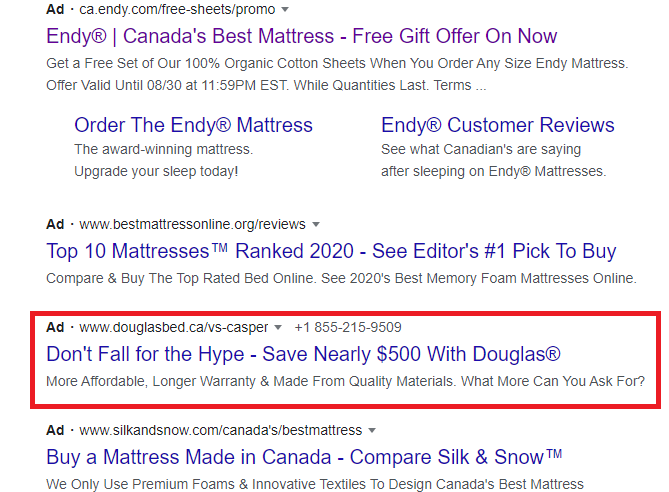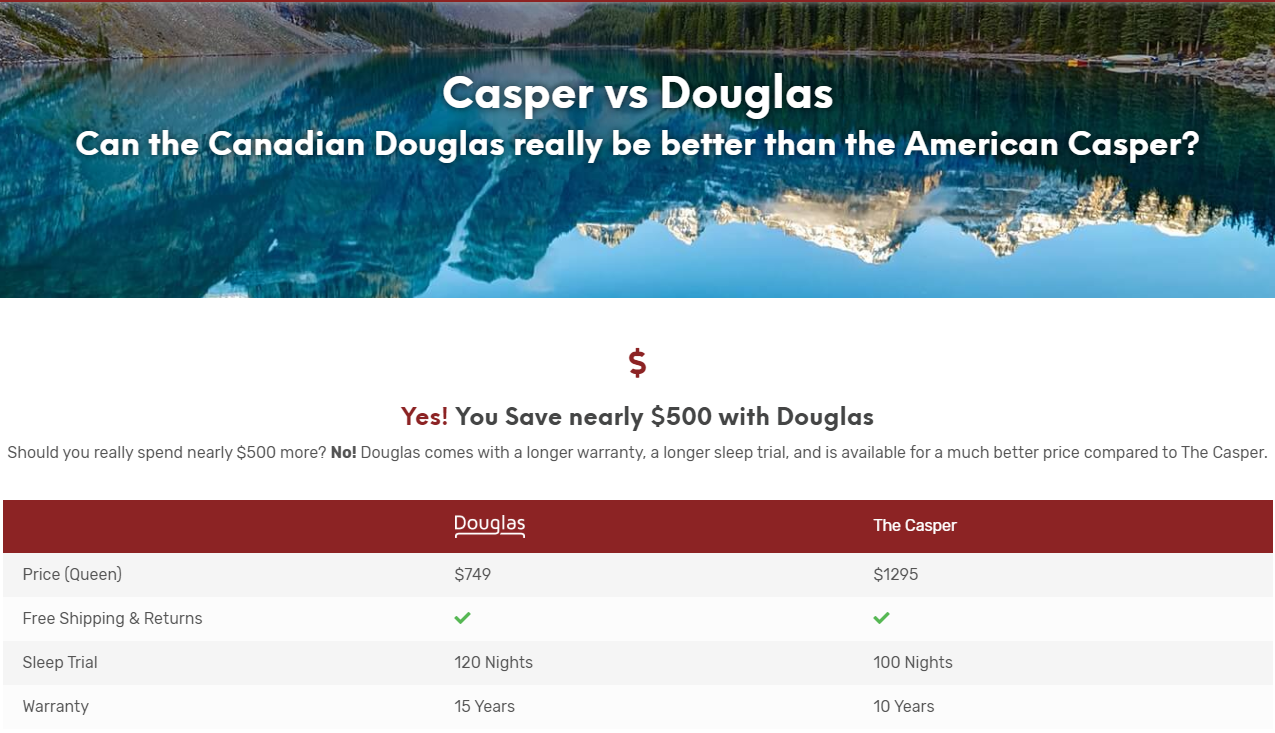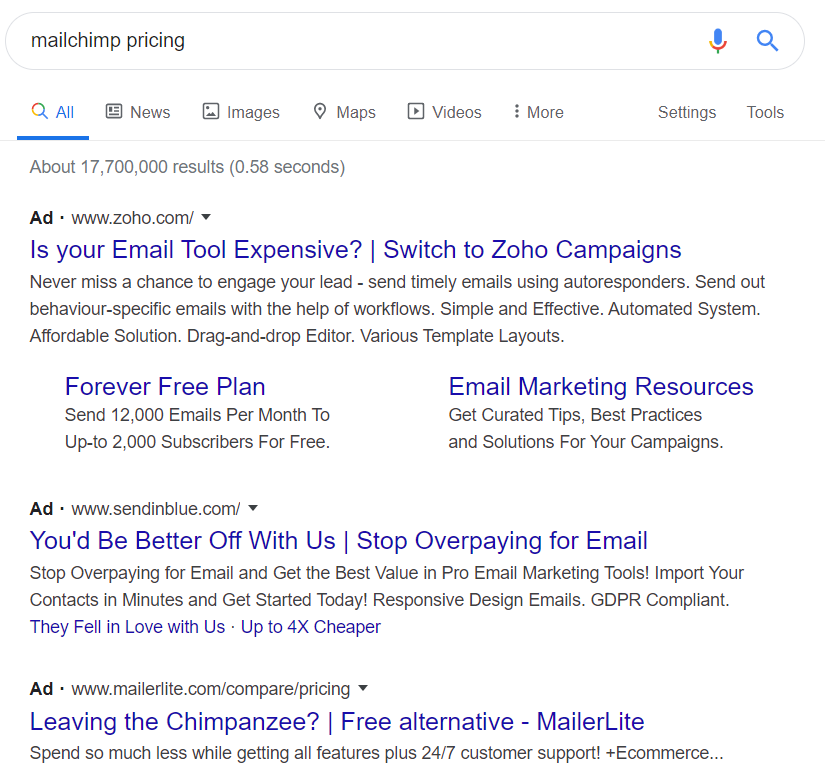Low-intent and Competitor Keyword Campaigns is is the fourth and final part of our SEM 101 blog series! Looking for the other parts? You can find them below:
- Part 1: Keyword, CPC, CTR, and More: Your 101 Guide to Search Engine Marketing
- Part 2: SEM 101 (Part 2): How Does Quality Score Work in Search Engine Marketing?
- Part 3: SEM 101 (Part 3): Branded and High-Intent Keyword Campaigns
After covering the first two keyword intents, Branded and High-Intent, this blog post will finish it off with the final two, Low-Intent and Competitor.
Need a helping hand with your campaign? Wingman has your back! Our expert SEM team has spent hundreds of hours curating countless ads for a diverse set of industries. We’re here to help. Book a Wingman and ask us how we can improve your campaign today.
Low-Intent Keywords
Low-Intent keywords signify a user doing research on a specific topic but not necessarily needing a solution currently. We’ve had past clients ask what the point of focusing advertising dollars is on customers not yet ready to make a purchase yet. The answer is simple: Low-Intent keyword campaigns are used as long-term marketing strategies and form the basis of remarketing campaigns. Building trust with low-intent prospects before they need a solution leaves you top of mind when they do. Think of it as the seeds you plant to reap the rewards in the future. If your sales cycle is longer than the industry average, Low-Intent keyword campaigns should be a staple in digital marketing mix.
[H3] How do I write copy for Low-Intent Keyword ads?
Low-Intent keyword campaigns should be considered top-of-the-funnel strategies. Top-of-the-funnel simply refers to the sales model of a customer’s journey when purchasing a product or service. Therefore, your campaign’s goal should be to drive brand awareness, build trust, and add value to the customer. For example, you wrote a blog with insightful and valuable information for potential prospects. Your ad copy could be used to introduce the main topic and hook them in.
There are 2 forms of Low-Intent keywords: Navigational and Informational.
Navigational Keywords
Navigational keywords are keywords that users search for to reach a particular area of a website.
- Bank login
- Government of Canada website
- YouTube
While navigational keywords are one of the most frequently searched keywords on search engines and demonstrate very clear intent, they generally provide little to no value from a digital marketing standpoint. Avoid these types of keywords.
Informational Keywords
On the other hand, Informational keywords demonstrate a user’s intent to acquire additional information on that product, service, or topic.
- Review
- Top
- Comparison
- Cheapest
- (of the) Year
- Best
Phrases such as “Best phones of 2020”, “How to sell my home”, or “Laptop reviews” are all informational keywords. Set aside some time to research what informational keywords your customers search for to develop a strong keyword set for your campaign. If you don’t know where to begin, reach out to the knowledgeable team at Wingman.
Remember, Low-Intent keyword campaigns should always revolve around building awareness and trust. This means including other marketing channels to support your entire top-of-the-funnel strategy. If you create consumer end products, create a plan to put your product into the hands of influencers to review. If you are a B2B business, offer insightful tips exclusively to subscribers of your mailing list.
Low-Intent Keyword Quality Score Goal
Aiming for a Quality Score of 7 is a good score to aim for in a Low-Intent keyword campaign. Allocating resources towards improving your Quality Score beyond this could be better spent on improving other campaigns such as High-Intent of Branded campaigns. Your campaign should have no more than 20 keywords revolving a common theme. Any more than that should be split into a separate ad group.
Competitor Keywords
Finally, we’ve come to the most challenging keyword to build a campaign around: Competitor keywords. In our previous blog, we spoke about using Branded keywords to deny ad real estate from your competitors. Competitor keywords is the other side of the coin. You are now the company competing to place on their ad real estate. However, despite its greater costs and the need to create a unique landing page tailored to your competitor, companies both large and small have benefitted from this type of campaign. Competitor keyword campaigns are frequently used for:
- Market Penetration: Entering the market as a new competitor can be difficult to build a loyal clientele. You can use this tactic to penetrate the market aggressively.
- Competitor Market Share Exploitation: Depending on the industry, Competitor campaigns create the opportunity to win your competitors’ dissatisfied customers or undecided prospects.
While every competitor campaign may look different from the next, the most important aspect is to develop a landing page that showcases why your product or service is better than your competitors’.
How do I write copy for Competitor Keyword ads?
Before you begin a Competitor keyword campaign, you need to be mindful of a few questions such as “Is this type of marketing appropriate in my industry?” and “How will this tactic affect my company’s brand?” A Competitor keyword campaign can be perceived as a distasteful or tactless approach by prospects, negatively affecting your brand image. However, if you always experiment with new copy, track which ad has the best click-through rate (CTR) and remain cognizant of your customer’s experience, you will have no issues with creating this type of campaign.
Competitor keyword copy needs to be written in such a way that clearly demonstrates to the user why they should choose your product or service instead. For example, your company may offer better support, a more competitive price, or be perceived as a higher quality product. I’ll offer two examples of Competitor ads: Douglas and MailChimp.
When you type in “Casper,” an ad appears for a Canadian mattress company named Douglas. Douglas offers the same “mattress-in-a-box” solution that Casper does, but why should the customer choose Douglas instead? The copy includes things like “More Affordable,” “Save”, “Quality”, and “Longer Warranty” to pull them into their landing page instead of Casper’s.

An advertisement by Douglas when users search their competitor’s keyword, “Casper”. Notice how Casper does not have a single ad on their own Branded keyword? Competitors can—and will—snatch up this real estate if left open.
Once the user clicks the ad and is directed to their website, Douglas has clearly built a landing page specifically tailored to why Douglas is the better option.

Douglas’ landing page highlighting a comparison between Douglas and Casper mattresses.
Competitor ad campaigns thrive or die on a landing page’s ability to convert. In the simplest terms, a poor customer experience—including conversion rate, CTR, session duration, etc.— means greater costs and decreased return on investment (ROI).
Our next example showcases a Branded keyword for one of the largest email marketing platforms on the internet: MailChimp. When you type in “mailchimp pricing”, MailChimp’s competitors swarm the top of the page. Yet, MailChimp does not have a single ad of their own to take advantage of their branded keyword real estate. Competitors such as Zoho, MailerLite, and Sendinblue exploit MailChimp’s large market share and reputation to convert defecting customers.

Several competitors taking advantage of MailChimp’s branded keyword, “mailchimp pricing”.
To summarize, an ad with top-notch copy that entices users to click and a landing page that clearly demonstrates the benefits of choosing your product over others is the key to making an effective Competitive keyword campaign. Keep those 2 things in mind and the rest will fall into place.
Once you’ve built your campaign, test, test, and test some more! Which ad works well? Which doesn’t? Which ad has the highest CTR and how can you improve upon it? Run a set of 3 ads on a regular basis (bi-weekly, monthly, quarterly, etc.) and gauge its performance. Keep the best performer and run it against another 2 or 3 ads to see how it competes again. Rinse and repeat. With the exception of High-Intent, Competitor campaigns should be your next biggest priority to improve.
A final word of caution: When writing Competitor keyword copy, do not try to circumvent Google’s Quality Score algorithm by writing alternate forms of your competitor’s brand name. Using the example above, this means writing a similar name like Mail-Chimp instead of MailChimp. While you may save a couple of cents on each click, it is simply not worth receiving an ad disapproval, suspension—or worse—a permanent ban to your account.
Competitor Keyword Quality Score Goal
Competitor keyword Quality Scores are incredibly difficult to reach a high score — receiving anything above 3 is killing it. This is because a Competitor keyword campaign’s only ammunition is your brand recognition and developing irresistible ad copy.
Conclusion
As you can see, there is so much content that we can cover on building a Search Engine Marketing (SEM) campaign, and we’re only scratching the surface. Our goal of creating this blog series is to not only give you a foundation to create your own SEM ad campaign, but to also give you a sense of the scope needed to create a terrific SEM strategy. Want to learn more? Have a question for us? Wingman Direct Marketing’s team has clocked hundreds of hours in experimenting countless ads from a diverse set of industries. If you want to leave it to the experts, we got your back. Book a Wingman today to make your next SEM campaign a successful one.

